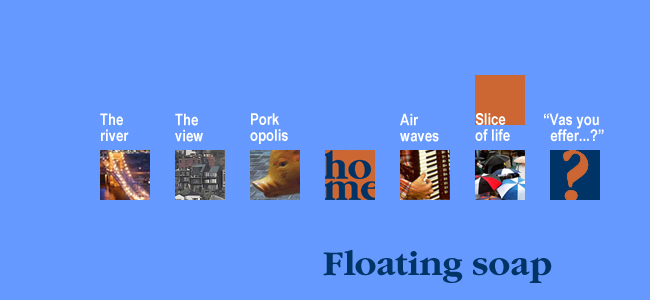 With the peak of the hog trade during the 1830s, two byproducts of pig fat -- candles and soap -- became the joint venture of candlemaker William Procter and soapmaker James Gamble. Both sharing a father-in-law who urged them to go into business together, the Procter and Gamble Company was born in 1837. Years later, their sons Harley Procter and James M Gamble developed a new refined brand of "P&G White Soap." (By this time, the candle was replaced by the light bulb.) It was made in huge vats, with the solution stirred by machine. One day an employee neglected to shut off the soap-making machine before going on lunch break. He returned to find the mixture all puffed up and frothy. After checking with his superior, and with orders waiting to be filled, it was decided to go ahead and cool the product for packaging and shipping.
With the peak of the hog trade during the 1830s, two byproducts of pig fat -- candles and soap -- became the joint venture of candlemaker William Procter and soapmaker James Gamble. Both sharing a father-in-law who urged them to go into business together, the Procter and Gamble Company was born in 1837. Years later, their sons Harley Procter and James M Gamble developed a new refined brand of "P&G White Soap." (By this time, the candle was replaced by the light bulb.) It was made in huge vats, with the solution stirred by machine. One day an employee neglected to shut off the soap-making machine before going on lunch break. He returned to find the mixture all puffed up and frothy. After checking with his superior, and with orders waiting to be filled, it was decided to go ahead and cool the product for packaging and shipping.In the weeks that followed, orders poured in for more of "the floating soap." After an investigation, it was determined that the extra stirring time produced millions of tiny air bubbles in the solution, making it lighter than water. This enabled housewives to avoid losing the bar of soap in the murky water of their laundry tubs. The reinvented product, by this time known as "Ivory," became the flagship of a growing industry.
Today, from its headquarters in Cincinnati, The Procter and Gamble Company remains the world's largest manufacturer and distributor of household products. And to think it happened by accident.


